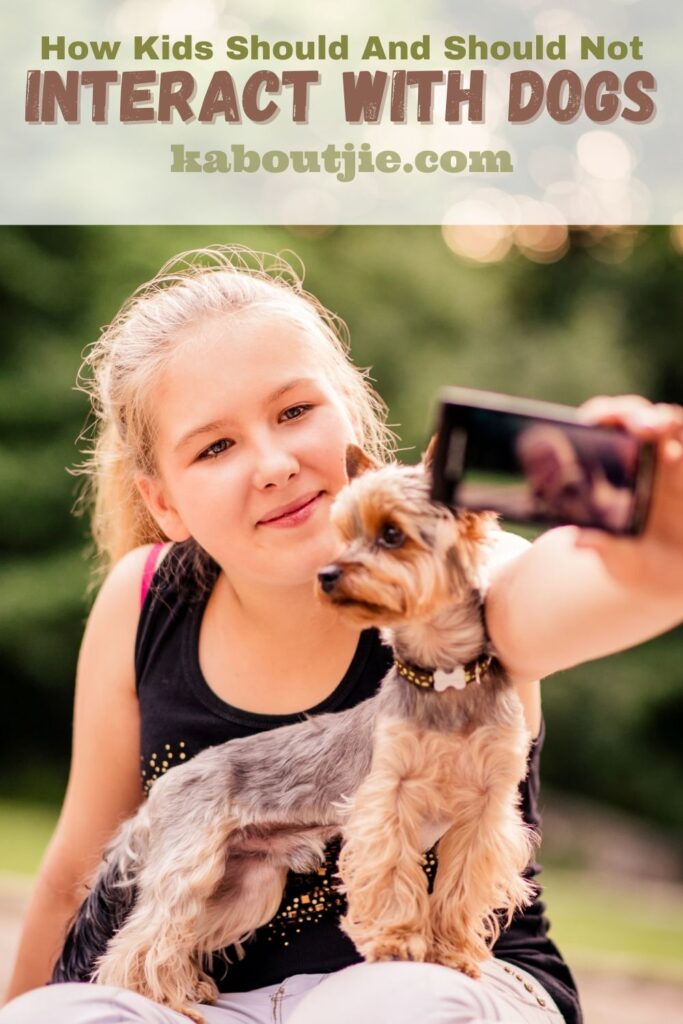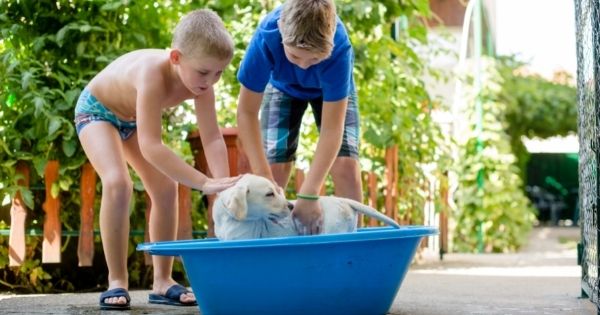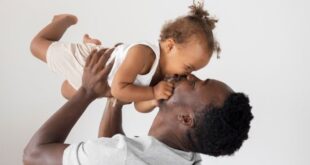Are you planning on adding a dog to your family? While your children will certainly be over the moon about this decision, there are some things you need to do to prepare them for this life-changing moment.
Sure, your pooch might seem calm when your child is climbing on him. He might not even mind occasional ear pulling or muzzle touching. Then, when a bite happens, you might think it occurred out of the blue. How could your beloved companion do this to your child?
The truth is, no matter how well you train your dog, you also need to teach your kids how to behave around their four-legged companion. Young kids don’t understand boundaries, so they might be surprised to find out their Fido won’t tolerate everything.
Here is how to teach your kids how they should (not) interact with their new pet:

Make a Proper Introduction
Your child will be overwhelmed with excitement once you bring your puppy home. However, the introduction is very important. This step is stressful as it is for your pup, and having a screaming child that wants to smother him with love will only make everything harder.
- Explain to your child that the introduction process needs to be slow.
- Give your new puppy the time to explore his new environment without being disturbed by children. The new smells and spaces are causing him enough anxiety.
- Once the pup feels comfortable, bring your children into the room. Have them sit in the middle of the room and explain to them they shouldn’t yell.
- Let the dog decide whether he wants to interact with your kids or not. Allow your children to reach toward the pup with their hands, but tell them not to forcefully pet him.
- Once your dog has sniffed your kids and shown signs that he wants to play or to get petted, let them have some time together – with your supervision.
This process is important as it helps your child learn how to respect your pet’s space and free will. A dog will not always be in the mood to deal with kids, and your children need to respect that. Also, this introductory process will prevent your pup from becoming fearful around kids, as he’ll know no one will force him to do anything.
Teach Kids to Understand How to Play
People and canines don’t play the same way. This is difficult for both children and puppies to understand. While you probably know all about training your pooch, you also need to teach your kids how to behave during playtime.
- Teach them to be gentle around your puppy, even as he grows bigger.
- Explain to them they shouldn’t yell or be overly loud around dogs, as they have much better hearing.
- Let your kids know that they shouldn’t scream or run if a playful dog jumps on them from excitement. Instead, they should turn their backs on the dog, allowing him to drop back on the ground. Dogs will confuse screaming and running with an invitation to play more.
You should also teach your kids to participate in taking care of your pooch. Try explaining to them that brushing and cleaning after your pup is also a game. This way, they’ll learn to be responsible, which is important in every life aspect.

What NOT to Do
Of course, you also need to teach your child some things they should never do around dogs. These actions include:
- No poking, hitting or pushing.
- No pulling on dog’s hair, ears, tail, or limbs.
- No hugging and kissing (especially if it’s not their dog).
- No sitting on dogs or riding them.
- Don’t let them approach a dog directly and look him in the eyes. They should always come to the dog from the side.
- Don’t allow them to approach a dog who is eating.
- Don’t let them yell at dogs.
- Never allow them to stomp near a sleeping dog.
- Explain to them they shouldn’t look dogs in the eyes, especially not if it’s looking intensely at them.
- Don’t let them chase after a dog that is walking or running away.
- Teach them not to run away from a scary dog, but instead to stay calm, with limbs by their sides.
Teaching a child how not to behave around animals is likely even more important than teaching them what to do. Any of these actions can make a dog behave aggressively, even if he is calm otherwise.
What if Your Kid Meets a Neighbor’s Dog?
Another important step is teaching your child how to behave with other dogs in your neighborhood. This is an essential step even for families who don’t have pets of their own. While you can know how your dog behaves, other people’s canines are a whole different story. This is why there are many precautionary steps needed.
- Your child needs to ALWAYS ask for the owner’s permission before petting a dog.
- Explain to them that not all dogs will behave the same way as your pet (if you have one).
- Teach him to recognize signs that a dog isn’t interested, such as growling, ears pulled back, or tail curled behind his legs.
- Kids need to be even more gentle around dogs they don’t know, even if they are much larger than pups they’re used to.
No matter how well-trained a dog is, you can never know whether he is used to interacting with kids. Your children need to know to respect that.

Don’t Forget Supervision
Finally, never let a small child be alone with a dog, whether that is your pet or someone else’s. No matter how well behaved both the dog and the child are, accidents can occur, and they can be unpredictable. All it takes is a second and a disaster can happen.
Still, don’t make your child afraid of dogs. Kids and dogs make amazing companions and they can have a great time together. Children can give dogs the playtime they need, and dogs can help kids have fun.
However, as a parent or an adult family member, it is your responsibility to keep both the kids and the puppy safe from one another. By teaching them these rules, they can learn how to have a blast in a safe way.
 Kaboutjie SA Mommy Blogs by Lynne Huysamen
Kaboutjie SA Mommy Blogs by Lynne Huysamen





My son is scared of dogs. He won’t go near a dog no matter what you say to him. He never had any incidents with them, he just doesn’t like their teeth😀.